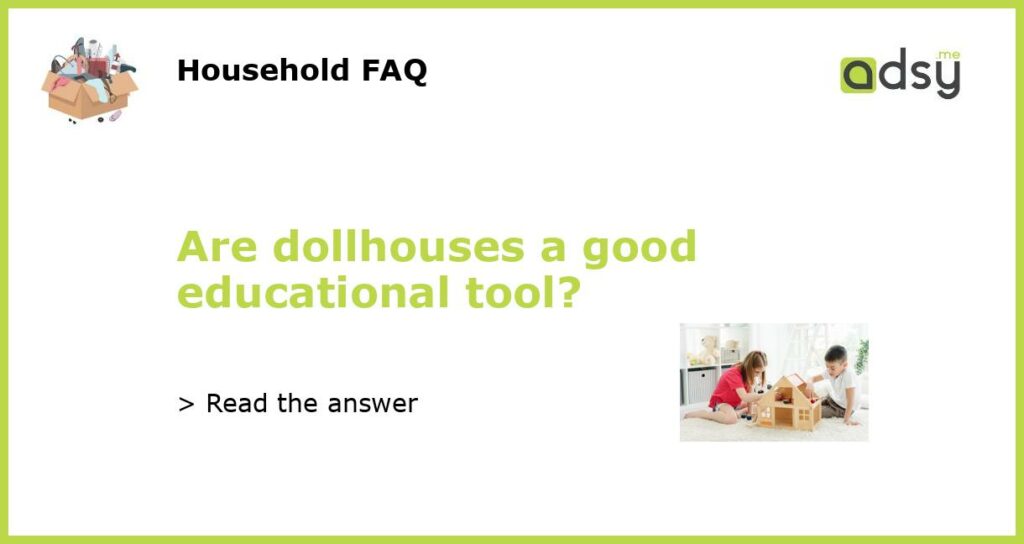Yes, dollhouses are a good educational tool
Dollhouses have long been seen as a source of entertainment for children, but they can also serve as a valuable educational tool. Dollhouses can help children develop a wide range of skills, including problem-solving, creativity, and fine motor skills. In addition, dollhouses can be used to teach children about different cultures, history, and even basic math and counting skills. With so many benefits, it’s no wonder that dollhouses are considered a good educational tool.
Develop problem-solving skills
One of the main benefits of using dollhouses as an educational tool is that they can help children develop problem-solving skills. Children are often faced with challenges when playing with a dollhouse, such as rearranging furniture or figuring out how to reach items in certain areas of the house. By finding solutions to these problems, children learn how to think critically and come up with creative solutions.
Promote creativity and imagination
Dollhouses also promote creativity and imagination in children. When playing with a dollhouse, children can create their own stories and scenarios, acting as the characters in their own miniature world. This encourages children to use their imagination and think creatively, which is important for their cognitive development.
Develop fine motor skills
Playing with dollhouses can also help children develop their fine motor skills. Children have to manipulate small objects, such as furniture and dolls, and this requires hand-eye coordination and precision. By practicing these movements, children can improve their fine motor skills, which are essential for tasks such as writing, drawing, and using utensils.
Learn about different cultures and history
Dollhouses can also be used as a tool to teach children about different cultures and history. Many dollhouses are designed to reflect different time periods or architectural styles, allowing children to learn about different historical periods. In addition, dollhouses can be set up to represent different cultures around the world, providing an opportunity for children to learn about different traditions, customs, and ways of life.
Teach basic math and counting skills
While playing with a dollhouse, children can also learn basic math and counting skills. They can practice counting the number of dolls, furniture pieces, or windows in the dollhouse. They can also learn about spatial relationships and terms like “in”, “out”, “on top of”, and “under”. This early exposure to math concepts can help build a strong foundation for future learning.
In conclusion, dollhouses are a good educational tool that can help children develop problem-solving skills, promote creativity and imagination, improve fine motor skills, learn about different cultures and history, and teach basic math and counting skills. Whether used in a classroom or at home, dollhouses provide a fun and interactive way for children to learn and grow. So, next time you see a dollhouse, remember its educational potential and the benefits it can bring to a child’s development.






